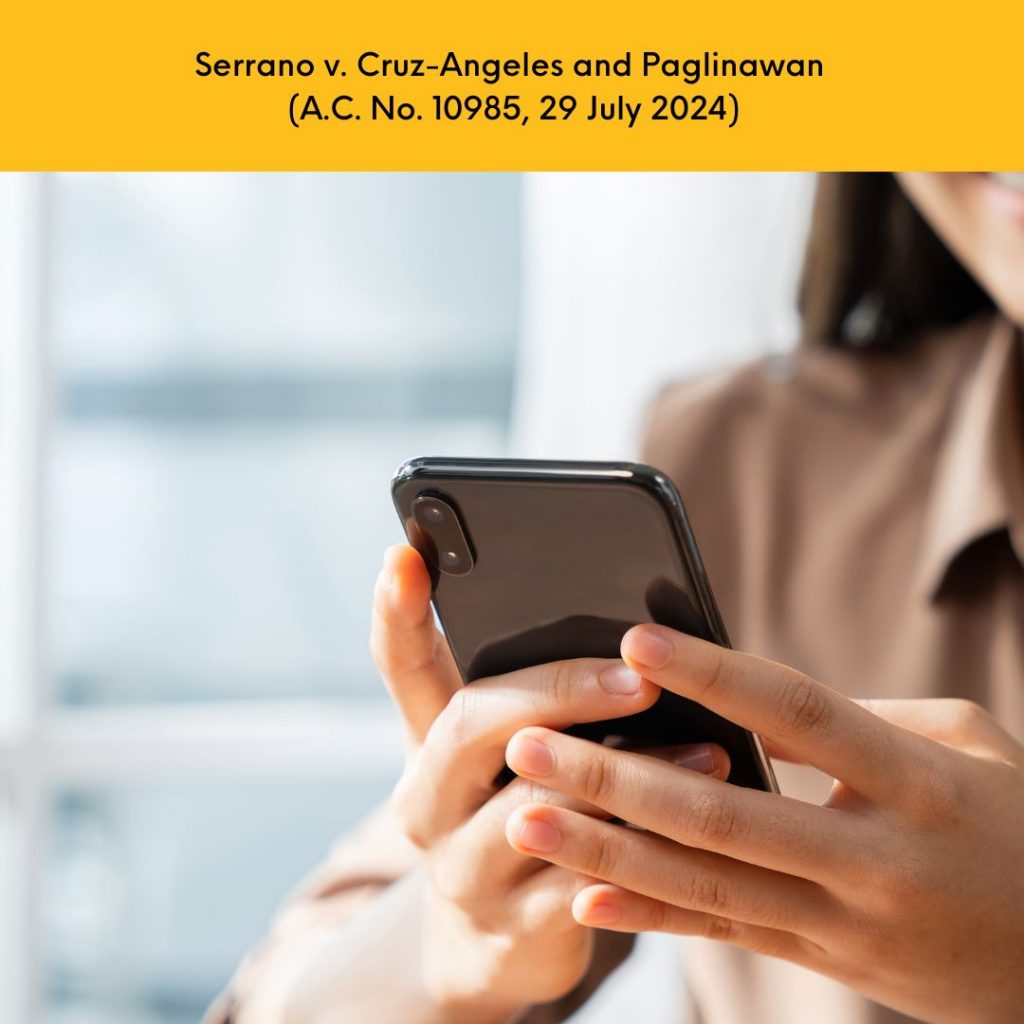
Published 11 July 2025, The Daily Tribune
In the age of digital expression, where reputations are built or broken with the click of a “post” button, the law has had to evolve to keep pace. Social media, once seen merely as a tool for communication or entertainment, has become a battleground for legal accountability. But the question arises—can screenshots of online posts be considered valid evidence in court?
The Supreme Court, in the case of Serrano v. Cruz-Angeles, tackled this head-on. The issue stemmed from an administrative complaint filed by Atty. Serrano against fellow legal practitioners Atty. Cruz-Angeles and Atty. Paglinawan. The charge: violation of the Code of Professional Responsibility and Accountability (CPRA), all rooted in Facebook posts allegedly made by the respondents.
Both lawyers were then representing a controversial figure—an expelled Iglesia Ni Cristo (INC) member who had accused the religious organization of illegal detention. Multiple posts discussing the case appeared on the respondents’ respective Facebook accounts. These were captured through screenshots and submitted as evidence.
At the heart of the matter was a dual legal inquiry: one, are screenshots admissible as documentary evidence? And two, what are the standards for their authentication?
The Court was unequivocal on the first point. Screenshots, it ruled, qualify as documentary evidence under Section 2, Rule 130 of the Rules of Court. This rule encompasses “writings, recordings, photographs or any material containing letters, words, sounds, numbers… or other modes of written expression offered as proof of their contents.” Screenshots, being stored images of online content, meet this threshold.
Moreover, under the Rules on Electronic Evidence—specifically Rule 3 and Rule 4—electronic documents, including screenshots, are treated as the legal equivalents of their physical counterparts. So long as the screenshot is a printout or visual output that reflects the data accurately, it may serve as an “original” under the Best Evidence Rule. The Court left no room for doubt: what appears on your screen can stand in court, but only if it’s properly proven.
And that leads to the second, more intricate issue—authentication. Recognition as documentary evidence does not automatically guarantee admissibility. The Rules on Electronic Evidence, particularly Section 2, Rule 5, set stringent requirements. An electronic document may be authenticated:
- Through a digital signature of the person who supposedly authored it;
- By showing that other security procedures authorized by law or the Supreme Court were used to confirm its integrity;
- Or by any other evidence that proves the document’s integrity and reliability to the satisfaction of the judge.
The complainant, unfortunately, fell short on all counts. The Court found that none of the authentication requirements were even alleged, let alone substantiated. There was no proof linking the respondents to the Facebook accounts in question, nor any digital trail that confirmed authorship of the posts. In short, while the screenshots looked damning, they lacked the evidentiary backbone to hold up in an administrative proceeding.
The case is a cautionary tale. In an era where screenshots are freely used to call out, cancel, or convict in the court of public opinion, the judiciary insists on something more: substantiation. Accusations, especially those that implicate one’s professional standing, cannot stand on digital images alone. The integrity of the evidence must be shown, not just assumed.
Lawyers and laypersons alike would do well to take heed. In the digital courtroom, as in the physical one, due process still reigns supreme.
For more of Dean Nilo Divina’s legal tidbits, please visit www.divinalaw.com. For comments and questions, please send an email to cad@divinalaw.com.

